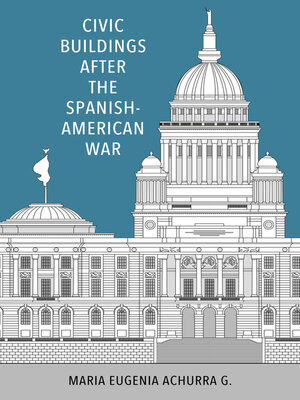Civic Buildings after the Spanish-American War
ebook ∣ Caribbean Studies Series
By Maria Eugenia Achurra G.

Sign up to save your library
With an OverDrive account, you can save your favorite libraries for at-a-glance information about availability. Find out more about OverDrive accounts.
Find this title in Libby, the library reading app by OverDrive.



Search for a digital library with this title
Title found at these libraries:
| Library Name | Distance |
|---|---|
| Loading... |
Following the 1898 Spanish-American War, the United States constructed federal buildings in its newly acquired territories, including Cuba, Puerto Rico, and the Philippines. Over a century later, many of these grand Beaux-Arts-style edifices are still in use. In Civic Buildings after the Spanish-American War, Maria Eugenia Achurra G. examines this architecture and urban design as a backdrop for US exceptionalism and expansionism.
The book defines exceptionalism and its role in US Beaux-Arts federal architecture. Subsequent chapters compare specific examples of Beaux-Arts civic architecture in the continental US and Latin America. The book also studies architectural and urban design from other US possessions of the Progressive Era, such as the former Panama Canal Zone and occupied territories like the Dominican Republic. Reviewing the work of relevant designers and architects, Achurra G. argues that architectural examples epitomize the rich, expansionist intentions of twentieth-century Progressive America. These lingering buildings function as intriguing material evidence of the United States' geopolitical, historical, and commercial meddling in the internal affairs of the Americas and elsewhere.
The book defines exceptionalism and its role in US Beaux-Arts federal architecture. Subsequent chapters compare specific examples of Beaux-Arts civic architecture in the continental US and Latin America. The book also studies architectural and urban design from other US possessions of the Progressive Era, such as the former Panama Canal Zone and occupied territories like the Dominican Republic. Reviewing the work of relevant designers and architects, Achurra G. argues that architectural examples epitomize the rich, expansionist intentions of twentieth-century Progressive America. These lingering buildings function as intriguing material evidence of the United States' geopolitical, historical, and commercial meddling in the internal affairs of the Americas and elsewhere.







